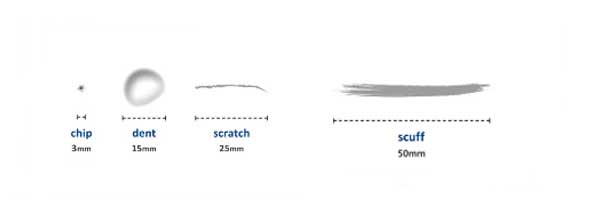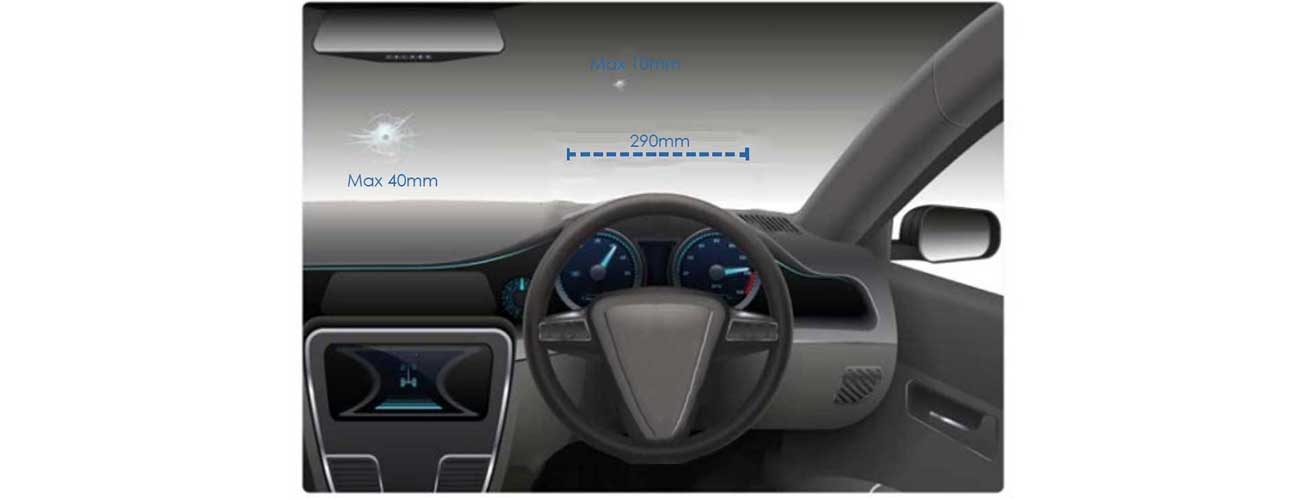We know that having a car that needs to be returned to the funder can be a confusing time, especially when it comes to knowing what is and what isn’t acceptable wear and tear from regular vehicle use, which is why we’ve put together this guide.
You’ll find out what fair wear and tear is, where you can find the guidelines to check them, when you should be checking them, what to do if there’s damage beyond what’s included, and much more.
What is Fair Wear and Tear?
Fair wear and tear is the phrase used to describe acceptable wear and damage to the vehicle that occurs during regular vehicle use. For lease vehicles what is and isn’t classed as fair wear and tear is set out by the British Vehicle Rental and Leasing Association (BVRLA) and so there will be little difference between funders, though they might vary slightly.
These guidelines will be used when you are returning the lease car by their representative completing the collection inspection and to review their report. Depending on whether there is any excessive wear that falls outside of the guidelines the funder may charge for repairs.
What Classifies as Fair Wear and Tear?
Under fair wear and tear guidelines, you will not be penalised for the below:
Paintwork chips that have a diameter of up to 3mm and are not rusted. There is a limit of four chips on one panel, six chips on a door edge and eight chips on a forward-facing panel. If there is more than this limit it will be classed as excessive and there may be charges for their repair.
Dents that are 15mm or less in diameter where the paint surface has not broken, provided there are no more than two on any one panel. This does not include dents that have a chip within them or are on the roof or swage line of any panel.
Surface scratches on the paintwork under 25mm that do not show the primer or bare metal and are able to be polished out. A maximum of four scratches per panel is allowed.
On unpainted areas scratches of under 25mm are allowed provided the moulding or trim is not broken, cracked or deformed.

Light scratching to windows is allowed provided they do not interfere with the driver’s line of sight, heating elements of the front or rear window, or any of the automated driver assistance systems.
This is not an extensive list of what is covered but rather a selection of some of the most common wear and tear. We recommend getting the full breakdown from your funder to check everything that would be classed as fair wear and tear.
What’s Not Covered?
There are also circumstances that would not be covered under fair wear and tear guidelines that you should be aware of. These include:
- Any missed services or you are unable to prove that services have been completed
- Any work needed because of an active warning light
- Rust or corrosion to bodywork, trim or alloys
- Any vehicle signage, livery or badges on the vehicle
- Any damage caused by applying / removing signage etc and any discrepancy they cause to the paintwork colour
- Excessive external dirt, including bird lime, tree sap and road debris
- Rubbish left inside the vehicle
- Missing keys
- Rips or tears to a convertible roof
- Chips or cracks to a panoramic roof
- Non-working tow bars
- Broken windscreen wipers
- Low fluids in washer, oil, brake fluid or coolant reservoirs
- Damaged or missing wingmirrors
- Any broken bulbs
- Tyres which are below the legal tread limits, have low pressure or are damaged
- Damage to wheel spokes, fascia or alloy hubs
- Grooved brake discs or drums
- Seized or damaged engine due to insufficient fluids or other vehicle damage
- Any tears, rips or staining to the interior upholstery
- Damage to any interior fittings including the sun visors, door compartments, rearview mirror and seatbelts
- Damage caused by any accessories such as car phone equipment
- Any damage to the windscreen that is over 10mm in the driver’s line of sight or over 40mm to any other part of it
When Should I be Checking the Guidelines?
There are three main points that we advise checking the guidelines and these are:
- Before signing the lease agreement / company car contract
- A couple of months or so before returning the vehicle
- On collection of the lease car
But you can check the guidelines at any time during the lease agreement to see what they are and how your car lines up.
We recommend you check the fair wear and tear guidelines of the lease company, and if your employer is providing the car through a company car scheme or similar their contract, to see what condition is acceptable for the vehicle to be returned in, so that you are aware of what they are and can be sure that you will be able to meet the conditions.
We advise you then check the guidelines again a month or so before the end of your contract. When you check them this time you should also inspect your vehicle so that you can see if you need to arrange any repairs to the car. This is to avoid you being charged for these repair works once the vehicle has been inspected and collected by the funder.
The third time you should check the guidelines is just prior to the vehicle collection so that they are fresh in your mind, and you can make sure anything noted on the collection inspection is in line with this so that you are able to challenge anything that should be allowed within the guidelines.
How to Assess Your Own Car for Fair Wear and Tear
You can easily assess your own car to see if any wear to it fits within the guidelines. Simply, request a copy of the guidelines from your funder if it is a lease vehicle or your employer and then use these to check your vehicle's condition.
We recommend cleaning the car thoroughly before you inspect it to ensure that any dust or dirt doesn't hide anything from you. Let the car fully dry before you inspect it as well, as water could make it look slightly different.
When checking your car you should do it in good light and in a safe location, making sure you are aware of your surroundings if you are in a public space. This will give you the best conditions to fully inspect the vehicle exterior and detect any issues.
It's not just the exterior that you need to check but also the interior. Again, we recommend that you clean the interior of the car as this will help you more easily identify any wear to the vehicle.
Some of the guidelines refer to the mechanical condition of the car, which is not as easy for you to check yourself. However, if you keep up with the regular servicing schedule and are making sure perishables like the fluids are regularly checked and topped up then you shouldn't have any issues, provided you are not driving the vehicle in a negligent way.
How to Fix and Recitfy Wear and Tear Issues
If you detect any damage that you think will exceed the fair wear and tear guidelines, you may wish to have these repaired before returning the car to avoid damage charges from the funder. It will depend on what the issue is as to how you go about rectifying it and whether you think it is worth doing so. For most repairs you will be able to take your vehicle to a local garage or dealership to be looked at, and if you have a maintenance package included as part of your lease then it might also be worth you speaking with your maintenance provider to see if they can assist in arranging any repairs.
What Happens if I Exceed the Fair Wear and Tear?
If you do have any wear to the vehicle that is beyond what is allowed by the fair wear and tear guidelines when collection time comes, then this will be noted on the inspection report and the funder will usually issue a charge for repairs or replacements.
This is why we recommend checking the guidelines and your vehicle condition about a month before you arrange collection as you can arrange for any necessary repairs to bring it back within the guidelines and stop these additional charges from being applied. Often you will find it cheaper to arrange this work yourself rather than pay the charge the funder issues.
How Much Could You Be Charged if You Exceed the Fair Wear and Tear Guidelines?
The exact amount you could be charged for exceeding fair wear and tear guidelines will depend on the damage and wear to the vehicle. Most funders will be able to provide an estimated cost matrix but these are only guidelines and any charge will not be confirmed until the vehicle has been inspected and the collection report reviewed.
One thing to be aware of is that it's not just excess wear and tear you may be charged for at the end of the lease, if you've exceeded the contract mileage allowance then you will also be charged for this.
For more information on the end of lease process take a look here or head back to our driver guides if you want to know more about other aspects of lease cars or company cars.



